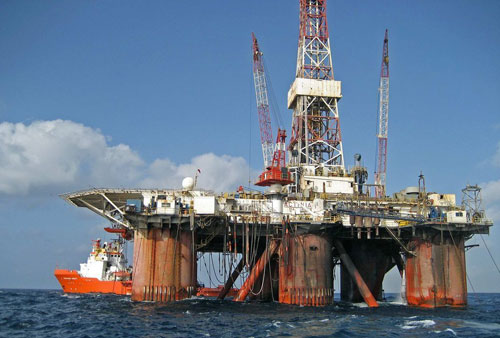(Ecns.cn)--The oil spill from the Penglai 19-3 oilfield polluted an area of more than 840 square kilometers in Bohai Bay, revealed the preliminary probe results of the State Oceanic Administration (SOA) at a news conference Tuesday. ConocoPhillips China (COPC), co-operator of the field, will take full responsibility and might face a fine of 200,000 yuan ($31,000).
The reports soon aroused heated debates among the public, who criticized the 200,000-yuan penalty as too small compared to the long-term impact the pollution would have on the marine environment. The weaknesses in the country's marine environmental protection laws have also been exposed, said some experts.
Spill under control despite small leak
"The spill is under control, except for a small leak, and the cleanup work is almost finished," said Li Xiaoming, director of the Department of Marine Environmental Protection at SOA.
"By reducing pressure in Platform B on June 19 and sealing Platform C with cement on June 21, the spill is well under control," Li added.
However, according to Wang Bin, vice director of the Department of Marine Environmental Protection at SOA, leaks from Platform B occurred on the seabed, causing the first spill incident of this kind in China. There is still a small leak coming from Platform B.
Li said the leaks were the result of increased pressure when water was injected into the well. The incident at Platform C was due to a surge in the well.
The operation was common and legally allowed in oil exploration, added Li, but it was still under investigation whether certain procedures had been against regulations.
Why keep silent?
Penglai 19-3 is a joint venture between COPC and the state-owned China National Offshore Oil Corp (CNOOC), with COPC taking 49% of its stake and CNOOC 51%.
In fact, as early as June 4, COPC had reported to a branch of the SOA that an oil spill at Platform B had been detected. On June 17, COPC reported another oil spill at Platform C.
However, COPC and CNOOC remained silent about the leak until it was reported by Southern Weekend on June 30.
It also took SOA almost a month to finish its preliminary investigation of the incident. The news conference was also the first formal one held since then.
At this, Li said that the causes of the leak are complicated, and it took time to collect related data and make an analysis.
CNOOC and COPC were also criticized by experts and bombarded by reporters for withholding information from the public.
"COPC's method of dealing with the incident is shocking and intolerable. It did not take its corporate responsibilities seriously and violated international rules," said Ma Jun, director of the Institute of Public & Environmental Affairs, adding that the country's restrictions to environmental lawsuits encouraged companies to withhold news of incidents and shirk their responsibilities.


















